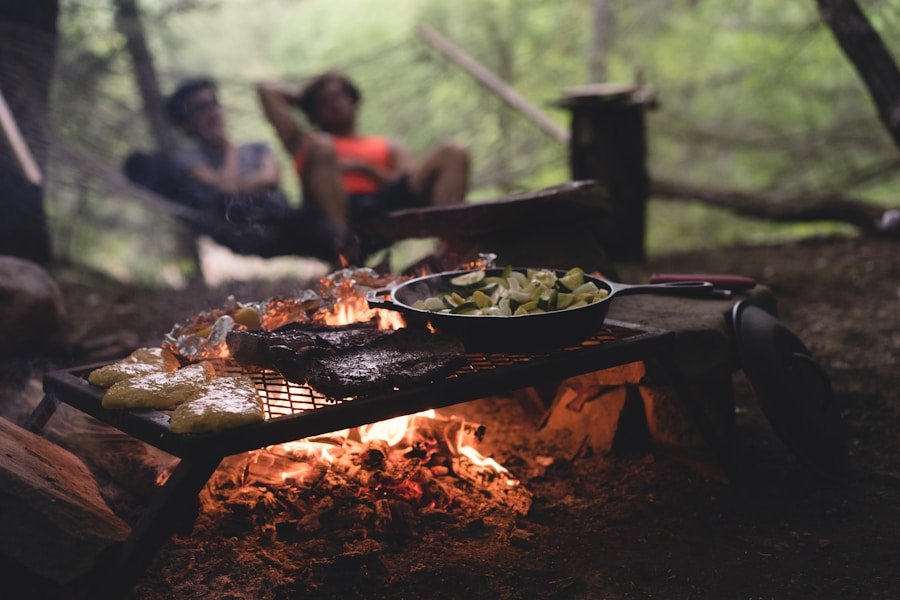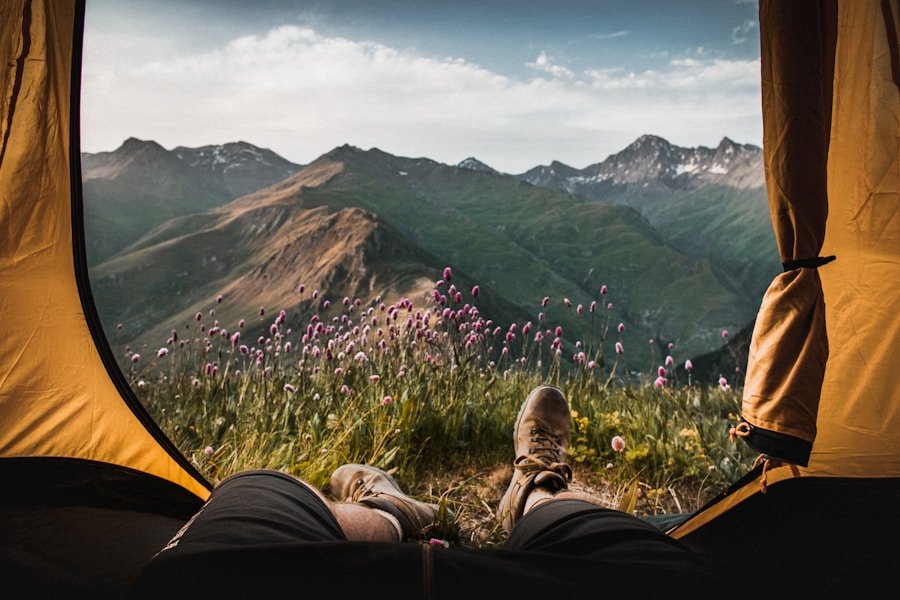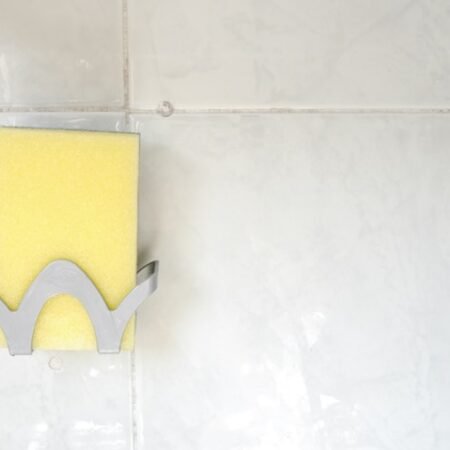When planning a long camping trip, it is crucial to bring the right equipment to ensure a comfortable and enjoyable experience. A high-quality tent is a vital item, as it should be both durable and lightweight. Opt for a tent that is easy to set up and take down, saving you time and effort during your trip.
Furthermore, investing in a good sleeping bag and sleeping pad is essential for a restful night’s sleep in the wilderness. Select a sleeping bag rated for the temperatures you expect to encounter and a sleeping pad that provides both comfort and insulation from the ground. A reliable backpack is another essential item for long camping trips.
Choose a backpack that is spacious enough to hold all your gear while being comfortable to carry for extended periods. Consider features such as padded shoulder straps, a hip belt, and multiple compartments for organization. Additionally, a reliable water filtration system is vital for staying hydrated during your trip.
Look for a lightweight and portable water filter that can be easily packed into your backpack. Finally, do not forget to pack a reliable camping stove and cookware for meal preparation during your trip. Opt for a stove that is compact and easy to use, and invest in lightweight cookware that can be easily packed into your backpack.
Key Takeaways
- Use vacuum-sealed bags to compress clothing and bedding for more space
- Essential gear includes a reliable tent, sleeping bag, and portable stove
- Roll clothing instead of folding to save space in your backpack
- Pack multi-purpose items and opt for lightweight, compact gear
- Use hanging organizers and collapsible containers to keep your camping kitchen tidy and efficient
Packing Efficiently: Tips for Maximizing Space
Organize and Compress Your Gear
Using compression sacks or packing cubes is an excellent way to organize and compress your clothing and gear. These tools can help you save space in your backpack and keep your items organized throughout your trip.
Packing Multi-Purpose Items
Consider packing multi-purpose items that can serve multiple functions during your trip. For example, a bandana can be used as a towel, a sunshade, or a makeshift water filter, saving space in your backpack.
Packing Strategically and Efficiently
When packing, look for gear and clothing specifically designed for backpacking and camping, as these items are often designed to be lightweight and packable. Consider the weight and bulk of each item you pack, and prioritize packing only the essentials. It’s also important to pack strategically, placing heavier items closer to your back and lighter items towards the outside of your backpack to help distribute weight evenly.
Space-Saving Hacks for Clothing and Personal Items
When it comes to packing clothing and personal items for a long camping trip, there are several space-saving hacks that can help you maximize space in your backpack. One of the best ways to save space is by packing clothing that is versatile and can be worn in multiple ways. For example, consider packing clothing items that can be layered for warmth or rolled up to save space.
Additionally, consider packing lightweight and quick-drying clothing that can be easily washed and dried during your trip. Another space-saving hack for clothing and personal items is to pack travel-sized toiletries and multi-purpose items. Look for travel-sized containers of shampoo, conditioner, and soap, as well as multi-purpose items such as a multi-tool or a bandana that can serve multiple functions.
Additionally, consider packing items that can be used for entertainment or relaxation, such as a lightweight book or a deck of cards, to help pass the time during your trip.
Organizing Your Camping Kitchen for Minimal Space
| Space-Saving Hack | Benefits |
|---|---|
| Rolling Clothes | Maximizes space in your backpack or suitcase |
| Compression Bags | Reduces the volume of your clothing and bedding |
| Multipurpose Items | Saves space by packing items with multiple uses |
| Organized Packing Cubes | Keeps your belongings neatly organized and compact |
Organizing your camping kitchen for minimal space is crucial for maximizing efficiency during your trip. One of the best ways to do this is by using collapsible or nesting cookware that can be easily packed into your backpack. Look for pots, pans, and dishes that can be stacked together to save space, and consider investing in lightweight and compact utensils for cooking and eating.
Additionally, consider packing pre-portioned ingredients and meals in resealable bags or containers to save space and reduce waste. Another tip for organizing your camping kitchen for minimal space is to plan your meals in advance and pack only the ingredients you need. Consider packing lightweight and non-perishable foods such as dehydrated meals, trail mix, and energy bars to save space in your backpack.
Additionally, consider packing multi-purpose cooking ingredients such as olive oil or spices that can be used in multiple meals. Finally, don’t forget to pack a reliable cooler or insulated bag for storing perishable items such as meat, cheese, and produce.
Streamlining Your Sleeping Arrangements: Tips for Compact Gear
When it comes to streamlining your sleeping arrangements for a long camping trip, it’s important to invest in compact and lightweight gear that can easily be packed into your backpack. One of the best ways to do this is by investing in a lightweight and compact tent that is easy to set up and take down. Look for a tent that is designed specifically for backpacking and camping, as these tents are often designed to be lightweight and packable.
Additionally, consider investing in a lightweight sleeping bag and sleeping pad that can easily be rolled up and packed into your backpack. Another tip for streamlining your sleeping arrangements is to invest in multi-purpose gear that can serve multiple functions during your trip. For example, consider investing in a sleeping bag that can also be used as a blanket or a sleeping pad that can double as a yoga mat or a seat cushion.
Additionally, consider packing items such as a lightweight hammock or a bivy sack that can provide an alternative sleeping option if needed.
Packing Light: Strategies for Minimizing Weight and Bulk
Essentials Only
Packing light is crucial for minimizing weight and bulk during a long camping trip. One of the best strategies for packing light is to prioritize packing only the essentials and leaving behind any non-essential items. Consider the weight and bulk of each item you pack, and prioritize packing lightweight and compact gear whenever possible.
Multipurpose Items
Additionally, consider investing in multi-purpose items that can serve multiple functions during your trip, such as a multi-tool or a bandana. These items can help reduce the overall weight and bulk of your pack while still providing the functionality you need.
Smart Clothing Choices
Another strategy for minimizing weight and bulk when packing for a long camping trip is to pack clothing items that are specifically designed for backpacking and camping. Look for clothing that is lightweight, quick-drying, and versatile, and consider packing only the clothing items you need for the specific activities you have planned during your trip.
Space-Saving Toiletries
Additionally, consider packing travel-sized toiletries and multi-purpose items to save space in your backpack. By packing smart and light, you can enjoy a more comfortable and enjoyable camping trip.
Staying Organized on the Trail: Tips for Maintaining Order Throughout Your Trip
Staying organized on the trail is crucial for maintaining order throughout your long camping trip. One of the best ways to do this is by using organizational tools such as stuff sacks, dry bags, or packing cubes to keep your gear organized and easily accessible throughout your trip. Consider using different colored bags or labels to help you quickly identify different types of gear or clothing items.
Another tip for maintaining order on the trail is to establish a system for keeping track of important items such as food, water, and navigation tools. Consider using a checklist or inventory system to ensure that you have all of the essential items you need before setting out on the trail each day. Additionally, consider establishing designated areas within your backpack or campsite for specific types of gear or personal items to help you stay organized throughout your trip.
In conclusion, streamlining your packing process for a long camping trip involves careful planning, strategic packing, and prioritizing lightweight and compact gear. By investing in essential gear, packing efficiently, utilizing space-saving hacks, organizing your camping kitchen, streamlining your sleeping arrangements, packing light, and staying organized on the trail, you can ensure a comfortable and enjoyable experience in the great outdoors. With these tips in mind, you’ll be well-prepared to embark on your next long camping adventure with confidence and ease.
FAQs
What are some space-saving hacks for long camping trips?
Some space-saving hacks for long camping trips include using compression bags to condense clothing and bedding, packing multi-purpose items, and utilizing the space inside your shoes for small items.
How can I streamline my packing process for a long camping trip?
To streamline your packing process for a long camping trip, you can create a packing list, pack items in an organized manner, and use storage containers or bags to keep everything tidy and easily accessible.
What are some tips for maximizing space in a camping backpack?
To maximize space in a camping backpack, you can pack items in a strategic order, utilize the exterior of the backpack for additional storage, and consider the weight and size of each item before packing.
Are there any specific items that are essential for space-saving on long camping trips?
Some essential items for space-saving on long camping trips include compression bags, multi-purpose tools, and collapsible or foldable items such as cookware and water bottles.













